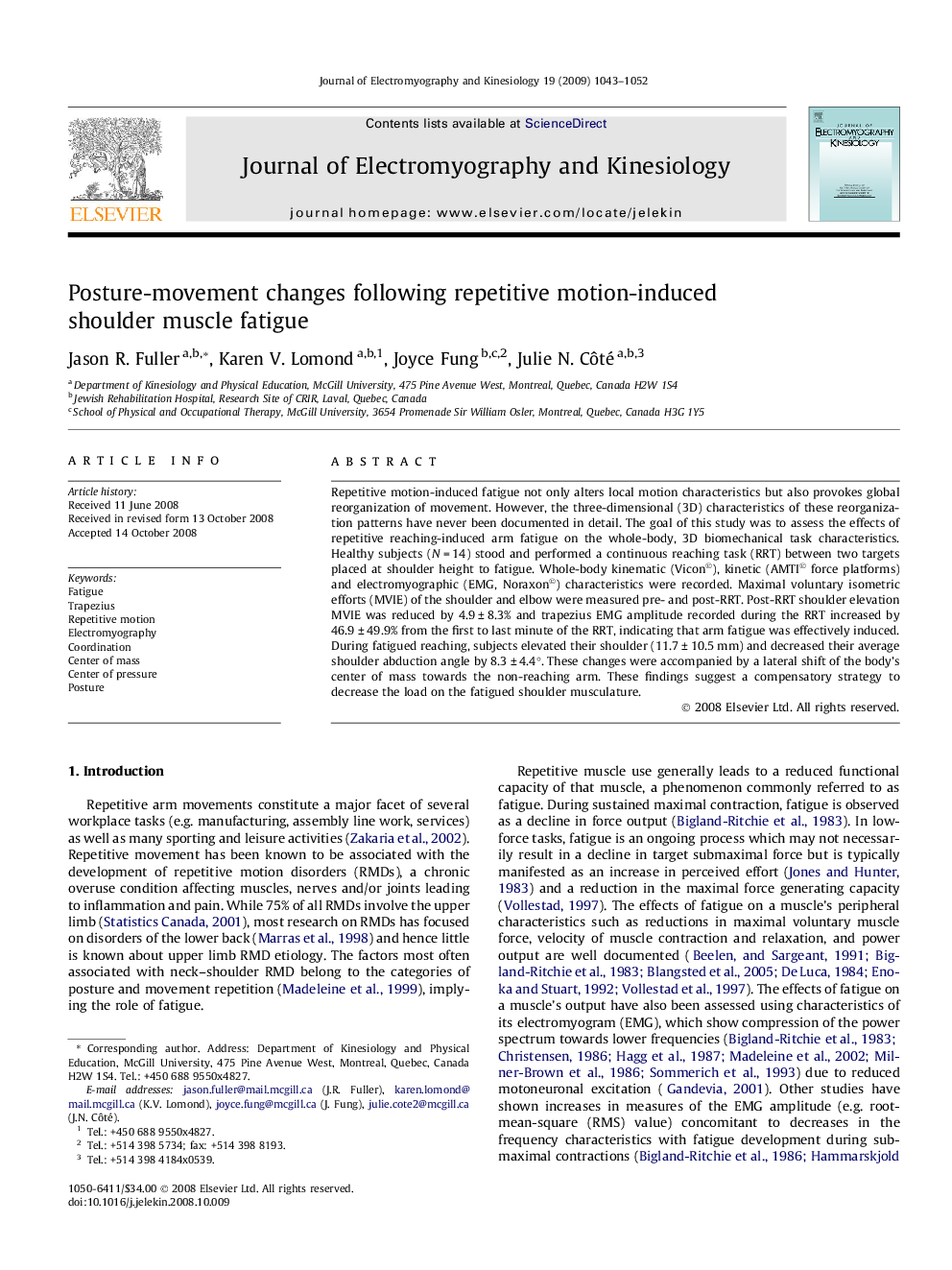| Article ID | Journal | Published Year | Pages | File Type |
|---|---|---|---|---|
| 4065406 | Journal of Electromyography and Kinesiology | 2009 | 10 Pages |
Repetitive motion-induced fatigue not only alters local motion characteristics but also provokes global reorganization of movement. However, the three-dimensional (3D) characteristics of these reorganization patterns have never been documented in detail. The goal of this study was to assess the effects of repetitive reaching-induced arm fatigue on the whole-body, 3D biomechanical task characteristics. Healthy subjects (N = 14) stood and performed a continuous reaching task (RRT) between two targets placed at shoulder height to fatigue. Whole-body kinematic (Vicon©), kinetic (AMTI© force platforms) and electromyographic (EMG, Noraxon©) characteristics were recorded. Maximal voluntary isometric efforts (MVIE) of the shoulder and elbow were measured pre- and post-RRT. Post-RRT shoulder elevation MVIE was reduced by 4.9 ± 8.3% and trapezius EMG amplitude recorded during the RRT increased by 46.9 ± 49.9% from the first to last minute of the RRT, indicating that arm fatigue was effectively induced. During fatigued reaching, subjects elevated their shoulder (11.7 ± 10.5 mm) and decreased their average shoulder abduction angle by 8.3 ± 4.4°. These changes were accompanied by a lateral shift of the body’s center of mass towards the non-reaching arm. These findings suggest a compensatory strategy to decrease the load on the fatigued shoulder musculature.
